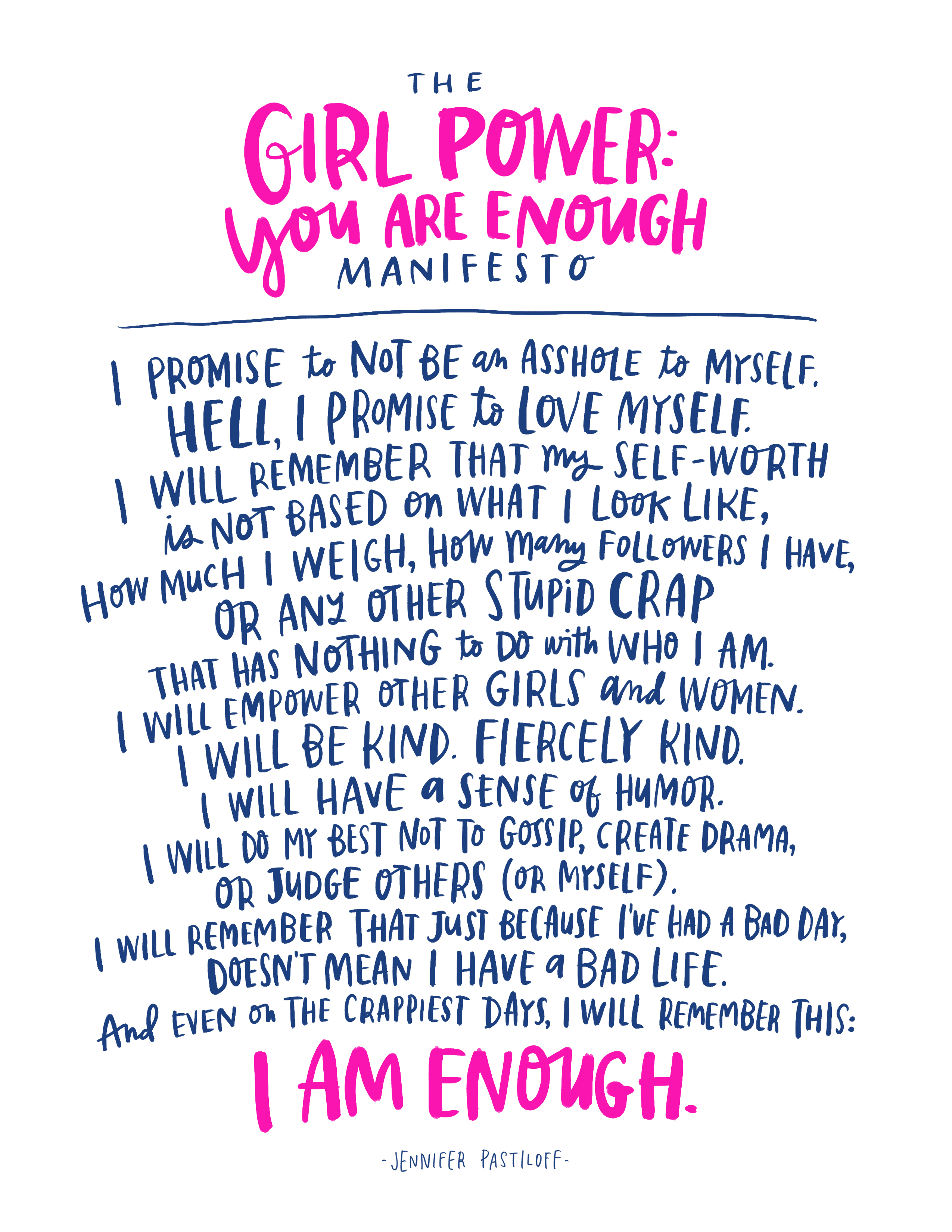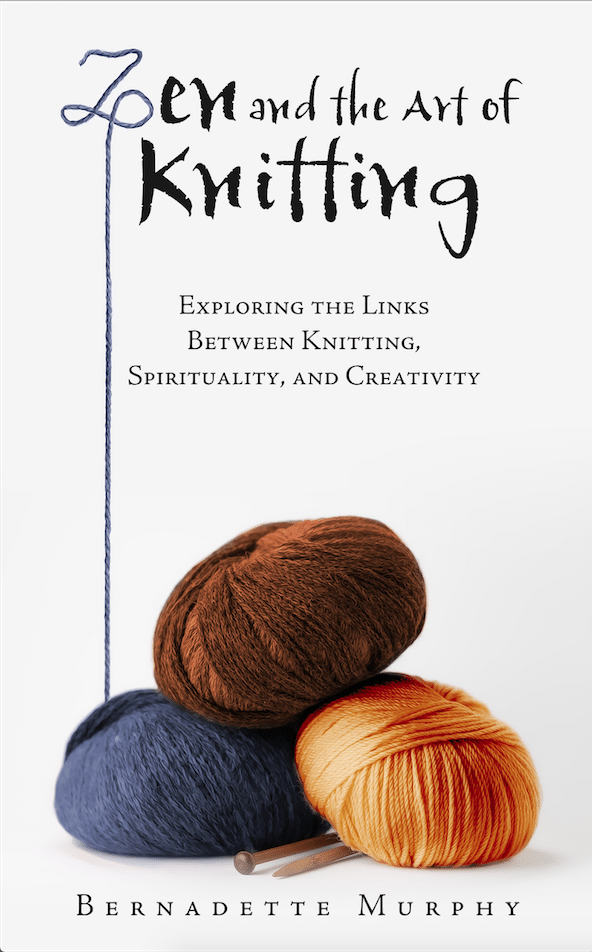By Bernadette Murphy
The New York Times recently focused on all the ways handcrafts like knitting and crocheting offer health benefits – from reduction in daily stress and to giving knitters a sense of purpose, to weight control, and even staving off a decline in brain function as we age.
Many have speculated that knitting itself constitutes a genuine meditative practice, something I was curious to explore. In the more traditional forms of meditation, those typically associated with Eastern religions, meditation is defined as a state of “bare attention.” As Ron Nairn puts it in What Is Meditation? meditation is “a highly alert and skillful state of mind because it requires one to remain psychologically present and ‘with’ whatever is happening in and around one without adding to or subtracting from it in any way.”
According to Psychology Today, the physical act of meditation can consist of sitting quietly and focusing on your breath, a word, or a phrase; the meditator may also be walking or standing.
The image we all carry of a person tied into lotus-position knots, sitting in a candlelit, incense-choked room, hands held upward, saying “ohm” in a low, sonorous voice may be a limited construct. There are countless ways, it seems, to practice meditation.
Researchers agree that the practice of meditation has untold health benefits–improvements that can be gleaned from as little as ten minutes of meditation (or knitting) on a regular basis. These benefits include increased alpha waves (the relaxed brain waves) and decreased anxiety and depression. Researchers at Harvard Medical School used MRI technology to monitor participants’ brain activity and learned that meditation activates the portion of the brain responsible for the autonomic nervous system (the regulator of bodily functions outside our conscious control) including digestion and blood pressure “These are also the functions that are often compromised by stress,” Cary Barbor reported in Psychology Today. “It makes sense, then, that modulating these functions would help to ward off stress-related conditions such as heart disease, digestive problems, and infertility.”
One such study showed that meditation helps reverse heart disease, that it reduces pain, and enhances one’s immune system, enabling it to better fight disease. With a group of cancer patients who were taught to meditate, for instance, a different study showed that meditation increases energy while reducing depression, anxiety, anger, confusion, and heart and gastrointestinal problems.
The definition of meditative practice has grown, too. Scientists such as Herbert Benson, M.D., the founding president of the Mind/Body Medical Institute at the Harvard Medical School, now believe that a range of meditative practices, including knitting, can elicit the “relaxation response” (the beneficial changes in brain physiology engendered by meditation). According to Benson, there are two basic steps necessary to evoke this relaxation response, steps that he found to be present in almost every culture around the globe. The first is the repetition of a sound, phrase, or prayer. (This, by extension, includes the repetition of an activity, like making a knitted stitch.) The second step is the passive setting aside of intruding thoughts and returning to the repetition.
“Through the simple act of changing their thought patterns, the subjects experienced decreases in their metabolism, breathing rate, and brain wave frequency. These changes appeared to be the opposite of the commonly known ‘fight-or-flight’ response and I called it the ‘relaxation response,'” Benson writes. If practiced daily, this relaxation response can boost the immune system and make it more resistant to the harmful effects of constant stress.
I spoke with Dr. Benson’s colleague, Peg Baim, the clinical director for training at the Mind/Body Institute at Harvard. Even among the young, she said, intense stress “alters brain physiology” and is implicated in many illnesses. “If you have a genetic propensity for a certain disease and are under a lot of stress, the system of checks and balances designed to keep you well goes kablooey—it’s ruined unless you counter the stress.”
Most knitters know this already. Knitter after knitter related stories of how the handcraft had a calming, soothing effect on his or her life. But the fact that the medical establishment is beginning to see the link and how it impacts physical wellbeing as well as mental health may be news. I asked Peg whether knitting is always a meditative experience. I’ve taught people to knit and have seen their shoulders bunched up around their ears, their hands almost in knots, trying to do what I was showing them. I’d be hard-pressed to consider that experience “meditative.”
Peg assured me that, no, knitting in and of itself is not necessarily a form of meditation.”I know people who can turn knitting into something harmful,” she said. “It’s all on how you approach it.” To illustrate the mindfulness and attention one needs while knitting to engender the relaxation response, Peg said to think of a neurosurgeon “who’s quite relaxed while doing very difficult, highly concentrated work.” Knitters must have a similar attitude. Peg told me of a brilliant researcher who’s looking into questions of “flow,” which might be another way of eliciting the relaxation response. “The key,” she said, “is to stay in a state of openness and to bring to your work an attitude of interest. Stay out of your judging mind.”
Often, self-criticism can stand in the new knitter’s way. The sense of relaxation and meditation won’t be forthcoming as long as you’re worried about doing it wrong or making a mistake.
Newness, though, is not the only stumbling block to finding nirvana. “I know older, long-term knitters who drive themselves nuts,” Peg said. “But they drive themselves nuts no matter what they’re doing, perfectionism being one of the big ways.”
When people meditate or participate in a meditative activity like knitting, Peg said, they increase their creativity, shut off their spatial awareness and time orientation, and they may experience oneness, unity, expansion, feelings of hope, and awe. These “spiritual” experiences are a part of our brain’s physiology. “You also increase your concentration,” said Peg.
“Most anything can be meditative,” Peg explained, “including a stroll through a museum.” If you look at the art with an openness to levels of interpretation, “not judging but taking the art in as beauty, inspiration, insight, being pinned to your interest, using your child’s mind,” you can trigger the same relaxation response.
To get the most out of your knitting time, then, Peg suggested that you have an intended focus and an attitude of interest. For example, say you’re working on a sweater for a newborn baby. The attitude of interest could be an openness towards the process of making the sweater, a willingness to follow all the steps necessary, and a lack of impatience to get to the end. The intended focus would be the newborn baby or the mother towards whom you are expressing love by your behavior of knitting. This frame of mind can put one into a state of deep, contemplative meditation. The Mind/Body Medical Institute teaches patients concentration strategies necessary for such contemplation. But just by knitting, Peg said, “we learn those same concentration strategies.”
- So we know we relax when we knit. Beyond relaxation, though, what else happens? It’s always seemed to me that something more essential than just relaxation is occurring. Does the brain physiology show anything else? I asked.
Creativity happens, Peg told me, along with a sense of transcending the self.
If we look into the brain physiology, we’ll see that the area of the brain that is usually activated by creativity is also activated by meditation. “If it’s activated a lot, has a lot of activity, it’s producing more signals, processing more input, turning on that part of the brain.” Thus, the great “high” I get in creating anything–an inspired vegetable soup, say, or an insightful paragraph–is the same euphoria I feel from knitting. Not just the finished garment, but the entire process: I’m making something. Me. These hands with this yarn and this series of movements is making something!
Knitting keeps my creativity muscles working. As with a physical muscle in the body, atrophy sets in if I don’t use my creativity for some time. When I try to do something inspired after a long hiatus from my own imagination, I find I’m rusty. I’m hesitant. But when I keep honoring and responding to my artistic self, my stores of creativity continue to grow and flourish, the muscles of my imagination become stronger.
At the same time that I’m lighting up the creativity center in my brain, Peg told me, I’m also shutting off other parts of the brain, particularly the temporal lobe (that part of the brain that causes us to feel separate and that handles time and space orientation). “There’s no activity there at all,” Peg explained.
Newsweek looked into the neurological underpinnings of spiritual and mystical experiences, and reported similar findings. Scientists have used a special type of brain imaging (SPECT) to snap a photo of the transcendent experience. “As expected, the prefrontal cortex, the seat of attention, lit up” during meditation. Meanwhile, “A bundle of neurons in the superior parietal lobe, toward the top and back of the brain, had gone dark.” This region, also known as the “orientation association area,” is the part of the brain that processes information about time and space, as well as the orientation of one’s body in space.
Some consider this occurrence a form of “temporal lobe seizure” in which you lose your sense of ego boundaries. Peg said: “We can extrapolate that in meditation and prayer, and yes, even knitting, one experiences a sense of timelessness and an expansion beyond ego boundaries.” Meditation prevents the brain from forming the distinction between yourself and others. “The meditators feel that they have touched infinity,” Newsweek reported. All sense of separateness and aloneness disappear, replaced instead with feelings of unity, of timelessness, of eternity. This accounts for the spiritual aspects engendered by any form of meditation, including knitting. But does this mean one accesses nirvana or God during knitting? Not necessarily.
No one knows whether these feelings are just neurological firings that occur in human brains for some inexplicable reason–a light show of our own making–or whether they confirm a spiritual reality that we recognize on some deeper, subconscious level. It’s possible that this awareness reflects an underlying unity, a connectedness between every form of life that hasn’t yet been confirmed by science–that we are all of a piece. Still, at this time, the evidence is inconclusive. “[T]here is no way to determine whether the neurological changes … mean that the brain is causing those experiences…or is instead perceiving a spiritual reality,” said the article in Newsweek.
For myself, at least, it doesn’t necessarily matter what exactly causes me to feel relaxed, connected, and at peace. Whether I am tapping into a spiritual reality beyond the reckoning of my logical mind or I am simply responding to neurological impulses, I’m happy to reap the benefits.
As Peg put it, “Creativity, spirituality, and meditation are all linked.” Many people think of them as being separate from each other, distinct entities; but brain physiology ties them all together.
Mostly, knitters knit to be still.
Regardless of the reasons to knit, there seems to be one unifying factor. Not a single knitter of those I interviewed said of her knitting time that she wished she were doing something else. Repeatedly, no matter how many people I asked, the same response was elicited: “When I’m knitting, there’s nowhere else I’d rather be and nothing else I’d rather be doing.”
To me, this sounds suspiciously like contentment, if not outright happiness. What a rare commodity these days! Interestingly, this came up in my conversation with Peg from the Mind/Body Health Institute at Harvard. Peg mentioned a researcher who’s looking into the components of happiness, trying to define what combination of things are necessary to make people happy. She said that the researcher had found three connected elements that make for happiness. The first is to be involved in a creative endeavor, towards which you have an attitude of interest—you’re absorbed by whatever it is you’re making. The second component is that your creative endeavor will produce some kind of finished product. Last, that the end product of your creative endeavor will provide a service to someone else. A song that others may hear. An aesthetically pleasing building that others will inhabit. A scarf that will warm someone or brighten the day of those who see it.
If these three things are operative, as they often are with knitting, Peg said that you will have tapped into the mysterious recipe for human happiness.
# # #
Bernadette Murphy is the author of the bestselling Zen and the Art of Knitting. Her newest book, Harley and Me: Embracing Risk on the Road to a More Authentic Life, will be published in May. She is an Associate Professor in the Creative Writing Department of Antioch University Los Angeles, and a former weekly book critic for the Los Angeles Times. Her website is Bernadette-Murphy.com.

March 13 NYC! A 90 minute class for women, girls and non-gender conforming folks (we encourage teens 16 and up) and all levels that will combine flow yoga, meditation, empowerment exercises, connection and maybe, just maybe, a dance party. This will be a class to remind you that you are enough and that you are a badass. It will be fun and empowering and you need no yoga experience: just be a human being. Let’s get into our bodies and move! Be warned: This will be more than just a basic asana class. It will be a soul-shifting, eye-opening, life-changing experience. Come see why Jen Pastiloff travels around the world and sells out every workshop she does in every city. This will be her last class before she has her baby so sign up soon. Follow her on instagram at @jenpastiloff and @girlpoweryouareenough.
Jen is also doing her signature Manifestation workshop in NY at Pure Yoga Saturday March 5th which you can sign up for here as well (click pic.)

Join Jen Pastiloff in Tuscany Sep 17-24, 2016. There are 5 spaces left. Email barbara@jenniferpastiloff.com asap. More info here. Must email first to sign up.





1 Comment
[…] Your brain on knitting. Fun fact: My amazing Dad actually taught me to knit when I was a kid, and I’ve recently picked it up again as a way to ease stress. It’s beautifully simple. […]